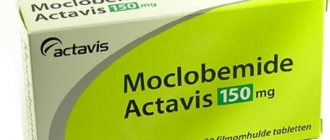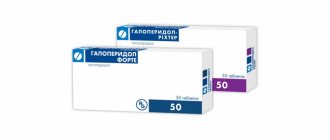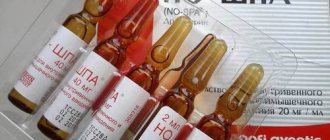One of the most important parts of living a long and happy life with Parkinson's disease is eating a balanced diet. However, it can be difficult to adhere to the recommendations of nutritionists, since this disease negatively affects the digestive functions of the body. This manifests itself in the fact that patients experience a decrease in appetite, taste, and smell; in addition, they are bothered by constipation, weight loss and nausea. The important thing here is to be persistent and take your food choices seriously. We will talk about how to eat for a sick person in this article.
Basic recommendations
The main feature of nutrition in Parkinson's is balance. One-half of the diet consists of vegetables and fruits. The other part should include carbohydrates and proteins. Cereals that contain a lot of vitamin B are ideal for nutrition. Meat and legumes are rich in protein, so they are also important.
Fast food, snacks, processed foods and fried foods should be removed from your diet. Food should be salted after cooking. Steam, oven and slow cooker are suitable for cooking. It is important that the food is prepared at home.
You should eat food at least 4-5 times a day; it is best to chop it up and distribute it into small portions.
It is also important to properly prepare the place where the patient eats. It is best to use special utensils such as weighted utensils, plastic mugs or straws. You can place a rubber mat on the table under the plate.
Authorized Products
- The weekly diet should consist of fish and seafood dishes. This could be tuna, mackerel, cod, sardines, saury, flounder. Sea kale is useful, which can be finely chopped and added to salads or stewed vegetables.
- If possible, use fresh vegetables. If eating them is difficult, switch to stewed or boiled and crushed. Restrictions on coarse vegetables - radishes, radishes, turnips. If tolerated well, legumes should be a mandatory component of the diet. They can be included in your diet daily. Green peas and green beans do not cause bloating. Beans and spinach have been shown to contain natural dopamine . Beans can be eaten as grain or green beans.
- Fruits and berries, as they contain fiber and pectins (especially citrus fruits, apples, viburnum, grapes, cranberries, dried dogwood berries). Pectins improve intestinal motility, reduce cholesterol , and cleanse the body of harmful substances (radioactive substances, pesticides, toxic metals).
- Bran, sesame seeds, fenugreek and flax are additional sources of fiber and healthy oils. They should be administered additionally if there is constipation .
- Vegetable soups (cabbage soup, beetroot soup, borscht) with vegetable broth. Vegetables are well ground when swallowing is difficult. Cereal soups are also good when boiled or pureed. You can prepare puree soups into which pureed meat or fish is added.
- Choose low-fat varieties of meat and poultry (give preference to turkey or chicken). It is enough to eat meat dishes once a week. Meat dishes should be cooked boiled and then chopped. You can cook steamed cutlets, pates and airy meat soufflé.
- Rye and bran bread. It may be easier to consume it in the form of soaked crackers.
- Milk, cottage cheese, fermented milk drinks low in fat and limited. Every day you can include up to 2 whole eggs, from which you can prepare omelettes (steamed and baked).
- Any cereal, but it is better to exclude pearl barley, as it is the coarsest cereal. Porridge is cooked in water and with the addition of milk. Dry and crumbly porridges are difficult to swallow, so you need to prepare “smear porridges” - boil well and add water to a semi-viscous consistency.
- To season ready-made dishes, use unrefined vegetable oils (olive, sesame, corn, flaxseed).
- All nuts and seeds contain healthy monounsaturated fats. You need to eat 30-50 g daily, but they are difficult to eat in their natural form, so you can grind them in a blender, add honey and get a tasty and healthy dessert. It’s a good idea to add chopped prunes and dried apricots here (especially if you are prone to constipation).
- Rosehip decoction, herbal teas, juices, still mineral water (up to 2 liters per day). Anti-stress and neurotrophic effects are exerted by herbal decoctions of catnip, skullcap, passionflower, and valerian root.
Table of permitted products
| Proteins, g | Fats, g | Carbohydrates, g | Calories, kcal | |
Vegetables and greens | ||||
| greenery | 2,6 | 0,4 | 5,2 | 36 |
| eggplant | 1,2 | 0,1 | 4,5 | 24 |
| beans | 6,0 | 0,1 | 8,5 | 57 |
| zucchini | 0,6 | 0,3 | 4,6 | 24 |
| cabbage | 1,8 | 0,1 | 4,7 | 27 |
| broccoli | 3,0 | 0,4 | 5,2 | 28 |
| boiled cauliflower | 1,8 | 0,3 | 4,0 | 29 |
| bulb onions | 1,4 | 0,0 | 10,4 | 41 |
| carrot | 1,3 | 0,1 | 6,9 | 32 |
| cucumbers | 0,8 | 0,1 | 2,8 | 15 |
| salad pepper | 1,3 | 0,0 | 5,3 | 27 |
| salad | 1,2 | 0,3 | 1,3 | 12 |
| beet | 1,5 | 0,1 | 8,8 | 40 |
| celery | 0,9 | 0,1 | 2,1 | 12 |
| soybeans | 34,9 | 17,3 | 17,3 | 381 |
| asparagus | 1,9 | 0,1 | 3,1 | 20 |
| tomatoes | 0,6 | 0,2 | 4,2 | 20 |
| Jerusalem artichoke | 2,1 | 0,1 | 12,8 | 61 |
| pumpkin | 1,3 | 0,3 | 7,7 | 28 |
| beans | 7,8 | 0,5 | 21,5 | 123 |
| garlic | 6,5 | 0,5 | 29,9 | 143 |
| lentils | 24,0 | 1,5 | 42,7 | 284 |
Fruits | ||||
| avocado | 2,0 | 20,0 | 7,4 | 208 |
| oranges | 0,9 | 0,2 | 8,1 | 36 |
| pomegranate | 0,9 | 0,0 | 13,9 | 52 |
| grapefruit | 0,7 | 0,2 | 6,5 | 29 |
| pears | 0,4 | 0,3 | 10,9 | 42 |
| kiwi | 1,0 | 0,6 | 10,3 | 48 |
| lemons | 0,9 | 0,1 | 3,0 | 16 |
| mango | 0,5 | 0,3 | 11,5 | 67 |
| tangerines | 0,8 | 0,2 | 7,5 | 33 |
| nectarine | 0,9 | 0,2 | 11,8 | 48 |
| peaches | 0,9 | 0,1 | 11,3 | 46 |
| apples | 0,4 | 0,4 | 9,8 | 47 |
Berries | ||||
| gooseberry | 0,7 | 0,2 | 12,0 | 43 |
| Red currants | 0,6 | 0,2 | 7,7 | 43 |
| black currant | 1,0 | 0,4 | 7,3 | 44 |
Nuts and dried fruits | ||||
| nuts | 15,0 | 40,0 | 20,0 | 500 |
| cashew | 25,7 | 54,1 | 13,2 | 643 |
| sesame | 19,4 | 48,7 | 12,2 | 565 |
| flax seeds | 18,3 | 42,2 | 28,9 | 534 |
| fenugreek seeds | 23,0 | 6,4 | 58,3 | 323 |
| sunflower seeds | 20,7 | 52,9 | 3,4 | 578 |
Cereals and porridges | ||||
| buckwheat (kernel) | 12,6 | 3,3 | 62,1 | 313 |
| oat groats | 12,3 | 6,1 | 59,5 | 342 |
| cereals | 11,9 | 7,2 | 69,3 | 366 |
| millet cereal | 11,5 | 3,3 | 69,3 | 348 |
| barley grits | 10,4 | 1,3 | 66,3 | 324 |
Raw materials and seasonings | ||||
| honey | 0,8 | 0,0 | 81,5 | 329 |
Dairy | ||||
| skim milk | 2,0 | 0,1 | 4,8 | 31 |
| natural yogurt 2% | 4,3 | 2,0 | 6,2 | 60 |
Cheeses and cottage cheese | ||||
| cottage cheese 0.6% (low fat) | 18,0 | 0,6 | 1,8 | 88 |
| curd tofu | 8,1 | 4,2 | 0,6 | 73 |
Meat products | ||||
| beef | 18,9 | 19,4 | 0,0 | 187 |
| rabbit | 21,0 | 8,0 | 0,0 | 156 |
Sausages | ||||
| boiled diet sausage | 12,1 | 13,5 | 0,0 | 170 |
Bird | ||||
| chicken fillet | 23,1 | 1,2 | 0,0 | 110 |
| turkey | 19,2 | 0,7 | 0,0 | 84 |
Fish and seafood | ||||
| fish | 18,5 | 4,9 | 0,0 | 136 |
| squid | 21,2 | 2,8 | 2,0 | 122 |
| mussels | 9,1 | 1,5 | 0,0 | 50 |
| seaweed | 0,8 | 5,1 | 0,0 | 49 |
Oils and fats | ||||
| butter | 0,5 | 82,5 | 0,8 | 748 |
| linseed oil | 0,0 | 99,8 | 0,0 | 898 |
| olive oil | 0,0 | 99,8 | 0,0 | 898 |
| sunflower oil | 0,0 | 99,9 | 0,0 | 899 |
Non-alcoholic drinks | ||||
| mineral water | 0,0 | 0,0 | 0,0 | — |
| green tea | 0,0 | 0,0 | 0,0 | — |
| * data is per 100 g of product | ||||
Diet
It is important to have a balanced diet. Medicines are taken 30-40 minutes before meals. An important component of breakfast are carbohydrates, as they have a beneficial effect on the absorption of drugs, while fats and proteins, on the contrary, interfere with drugs and interfere with absorption.
Diet principles:
- At least 4-5 meals;
- Meals consist of 3 courses and 2-3 snacks;
- Products should be easy to digest;
- The last dose should be 3-4 hours before bedtime;
- The volume of food is no more than 200-250 ml.
Fully or partially limited products
The following should be excluded from the diet:
- fatty pork, duck and goose meat, sausages, cooking fats, smoked meats, canned fish, fish caviar, margarine;
- products containing monosodium glutamate (it negatively affects the basal structures of the brain);
- all types of broths, fried foods;
- fatty dairy products.
It is recommended to significantly limit the consumption of sunflower oil, chocolate, ice cream, cocoa, strong tea and coffee, confectionery products, pastry products, cakes, cream pies, sugar, jam and jam.
Table of prohibited products
| Proteins, g | Fats, g | Carbohydrates, g | Calories, kcal | |
Vegetables and greens | ||||
| radish | 1,2 | 0,1 | 3,4 | 19 |
| white radish | 1,4 | 0,0 | 4,1 | 21 |
| red radish | 1,2 | 0,1 | 3,4 | 20 |
| black radish | 1,9 | 0,2 | 6,7 | 35 |
| spinach | 2,9 | 0,3 | 2,0 | 22 |
| sorrel | 1,5 | 0,3 | 2,9 | 19 |
Fruits | ||||
| bananas | 1,5 | 0,2 | 21,8 | 95 |
Berries | ||||
| grape | 0,6 | 0,2 | 16,8 | 65 |
Mushrooms | ||||
| mushrooms | 3,5 | 2,0 | 2,5 | 30 |
Nuts and dried fruits | ||||
| raisin | 2,9 | 0,6 | 66,0 | 264 |
Cereals and porridges | ||||
| semolina | 10,3 | 1,0 | 73,3 | 328 |
| white rice | 6,7 | 0,7 | 78,9 | 344 |
Flour and pasta | ||||
| pasta | 10,4 | 1,1 | 69,7 | 337 |
Confectionery | ||||
| jam | 0,3 | 0,2 | 63,0 | 263 |
| jam | 0,3 | 0,1 | 56,0 | 238 |
| candies | 4,3 | 19,8 | 67,5 | 453 |
| pastry cream | 0,2 | 26,0 | 16,5 | 300 |
| cookie | 7,5 | 11,8 | 74,9 | 417 |
Ice cream | ||||
| ice cream | 3,7 | 6,9 | 22,1 | 189 |
Cakes | ||||
| cake | 4,4 | 23,4 | 45,2 | 407 |
Chocolate | ||||
| chocolate | 5,4 | 35,3 | 56,5 | 544 |
Raw materials and seasonings | ||||
| mustard | 5,7 | 6,4 | 22,0 | 162 |
| mayonnaise | 2,4 | 67,0 | 3,9 | 627 |
Dairy | ||||
| milk 3.6% | 2,8 | 3,6 | 4,7 | 62 |
| milk 4.5% | 3,1 | 4,5 | 4,7 | 72 |
| cream | 2,8 | 20,0 | 3,7 | 205 |
| sour cream 25% (classic) | 2,6 | 25,0 | 2,5 | 248 |
Cheeses and cottage cheese | ||||
| cheese | 24,1 | 29,5 | 0,3 | 363 |
| cottage cheese 11% | 16,0 | 11,0 | 1,0 | 170 |
| cottage cheese 18% (fat) | 14,0 | 18,0 | 2,8 | 232 |
Meat products | ||||
| pork | 16,0 | 21,6 | 0,0 | 259 |
| pork liver | 18,8 | 3,6 | 0,0 | 108 |
| pork kidneys | 13,0 | 3,1 | 0,0 | 80 |
| pork fat | 1,4 | 92,8 | 0,0 | 841 |
| salo | 2,4 | 89,0 | 0,0 | 797 |
| beef liver | 17,4 | 3,1 | 0,0 | 98 |
| beef kidneys | 12,5 | 1,8 | 0,0 | 66 |
| beef brains | 9,5 | 9,5 | 0,0 | 124 |
Sausages | ||||
| smoked sausage | 16,2 | 44,6 | 0,0 | 466 |
| smoked sausage | 9,9 | 63,2 | 0,3 | 608 |
| sausages | 10,1 | 31,6 | 1,9 | 332 |
| sausages | 12,3 | 25,3 | 0,0 | 277 |
Bird | ||||
| smoked chicken | 27,5 | 8,2 | 0,0 | 184 |
| duck | 16,5 | 61,2 | 0,0 | 346 |
| smoked duck | 19,0 | 28,4 | 0,0 | 337 |
| goose | 16,1 | 33,3 | 0,0 | 364 |
Fish and seafood | ||||
| smoked fish | 26,8 | 9,9 | 0,0 | 196 |
| salted fish | 19,2 | 2,0 | 0,0 | 190 |
| Red caviar | 32,0 | 15,0 | 0,0 | 263 |
| black caviar | 28,0 | 9,7 | 0,0 | 203 |
| canned fish | 17,5 | 2,0 | 0,0 | 88 |
| cod (liver in oil) | 4,2 | 65,7 | 1,2 | 613 |
Oils and fats | ||||
| animal fat | 0,0 | 99,7 | 0,0 | 897 |
| cooking fat | 0,0 | 99,7 | 0,0 | 897 |
Non-alcoholic drinks | ||||
| instant coffee dry | 15,0 | 3,5 | 0,0 | 94 |
| black tea | 20,0 | 5,1 | 6,9 | 152 |
| * data is per 100 g of product | ||||
Cooking method and portion size
Following proper cooking methods and doctor-recommended diets will help with Parkinson's disease. It is important to preserve vitamins in food, so it is best to eat raw fruits and vegetables.
The best cooking methods are boiling and steaming, which preserve the nutrients in the food. A slow cooker is suitable for stewing.
Due to problems with chewing, it is best to eat small portions that do not tire the patient and make eating more enjoyable.
What you shouldn't eat
Patients should remember that it is extremely important to ensure maximum absorption into the blood of the medications that are prescribed to them. Certain foods may prevent this, namely those that contain a lot of:
- squirrel;
- gland.
When protein or iron enters the digestive system, it quickly combines with molecules of substances contained in medications. The molecules become too large to penetrate the intestinal wall. The body cannot absorb them, they simply do not enter the blood, which means that the active substances will not fulfill their therapeutic function. The medicine will simply remain in the intestines and then be excreted from the body through feces.
Is it really necessary to give up meat, milk and other foods containing iron and protein for the sake of the effectiveness of treatment? In fact, such sacrifices are absolutely unnecessary. Protein and iron are very necessary for the body and should be present in the diet. You just need to eat protein foods and those containing iron 2 hours before or 2 hours after taking the medicine. During this time, the molecules of substances contained in medical capsules and tablets will penetrate into the blood. This is a compelling argument to adhere to such simple recommendations.
Types of diets
For this disease the following are used:
— Mediterranean is an excellent option, as it provides the necessary amount of fiber and is suitable in terms of calories. In addition, it is optimal prevention for high cholesterol levels and chronic arterial diseases.
- Gluten-free - its effect on the disease is very controversial, since cereals containing the required amount of gluten are removed, which means that the consumption of vitamin B, which is important for a patient with Parkinson's, is reduced.
- Ketogenic - a diet in which the patient consumes few carbohydrates, a large amount of fat and an average amount of protein. According to researchers, this diet helps relieve some symptoms, such as tremors and muscle failure. But this type of diet is dangerous because it puts high pressure on the kidneys, it does not contain enough vitamins, and it causes constipation.
What lies behind this diagnosis?
Parkinson's disease is painful, personality-destroying and incurable. Therapy will only help slow down the process and alleviate symptoms. The cause of the disease lies in the fact that the cells of the substantia nigra of the brain begin to die. Normally, the substantia nigra produces dopamine, a hormone that helps transmit nerve impulses responsible for fine motor control.
A person with Parkinson's produces very little of the much-needed dopamine. It is for this reason that a characteristic trembling of the head and hands develops. Most often, older people suffer from this pathology.
There are no drugs yet that can please patients and doctors with a lasting effect. The drugs used have many side effects. Therefore, there is a constant search for alternatives to medications. One of them is proper nutrition.
Fasting and fasting days
It is important that the diet contains the required amount of calories, but fasting for 2-4 days helps the immune system work better and speeds up the process of formation of new neurons.
How to avoid mistakes when fasting:
- Acceptable only for normal or overweight people;
- Short duration is very important - no more than one day a week;
- You should definitely consult your doctor;
- Contraindicated in patients with advanced disease.
Fasting days also help in activating the immune system and getting rid of damaged cells. In addition, doctors recommend having days without protein foods, since Levadopa medications are not compatible with protein.
Side effects that occur with long-term use of levodopa drugs
For about 50 years, levodopa (L-DOPA is a levorotatory isomer of the amino acid deoxyphenylalanine) has remained the most effective treatment for Parkinson's disease. In terms of effectiveness, it is ahead of any other antiparkinsonian drug and even neurosurgical intervention. It provides the most guaranteed anti-Parkinsonian effect, causing improvement in almost 100% of patients with Parkinson's disease. Not a single patient with Parkinson's disease who seeks to maximize the period of their active life can avoid taking it. Levodopa is considered the gold standard treatment for Parkinson's disease. It increases the life expectancy of patients. To date, there is no convincing data on the neurotoxic effects of levodopa. Moreover, the ability of small doses of levodopa to have a neuroprotective effect cannot be excluded.
After ingestion, levodopa enters the brain and is converted into dopamine by functioning nerve cells there, compensating for its deficiency. Modern drugs (such as Nacom or Madopar) contain a combination of levodopa with an inhibitor of the enzyme DOPA decarboxylase, which blocks the metabolism of levodopa in peripheral tissues, resulting in more of the levodopa reaching the brain and reducing the likelihood of side effects associated with the peripheral action of the drug. In the early stages of Parkinson's disease, even small doses of levodopa often have a serious effect, almost completely eliminating the symptoms of parkinsonism. Unfortunately, several years after starting treatment with levodopa, the reaction to the drug changes in a significant proportion of patients: the duration of action of a single dose decreases, violent movements (dyskinesia) appear.
The patient takes the prescribed single dose of levodopa, it begins to act after 40 minutes - the patient begins an “on” period, characterized by a decrease in the symptoms of parkinsonism, and after 3-4 hours, and then even faster - after 2-2.5 hours - the effect of the drug weakens - a period of “switching off” begins with a decrease in motor activity. Sometimes “switching on” and “switching off” are accompanied by involuntary (violent) movements of various types. During the day, there are also freezes when walking, when for several seconds or minutes the patient cannot move. People with this disorder may have particular difficulty turning or passing through relatively narrow doorways. Fluctuations in motor activity, possible over a wide range - from excessive motor activity at the peak of the dose to a sharp weakening of motor capabilities during the "off" period - are called motor fluctuations in the medical literature.
There are several types of motor fluctuations. The phenomenon of “exhaustion” at the end of the dose is characterized by a gradual, predictable partial return of parksinsonism symptoms by the end of the next dose of levodopa. Many patients, as the effect of a single dose of levodopa wears off, also note depressed mood, anxiety, sweating, palpitations, increased pain, etc. (“non-motor fluctuations”).
Over time, the patient's transition from the “on” state to the “off” state becomes increasingly brief and abrupt, which is referred to as the “on-off” phenomenon.
Sometimes the “off” period occurs suddenly, regardless of the time of taking the drug. In addition to the above-mentioned fluctuations, a slow development of “switching on” or a complete absence of “switching on” is possible, when taking the next dose is not accompanied by an improvement in clinical symptoms or does not occur quickly enough.
Against the background of “on” (at the peak dose of levodopa), rapid “dancing” (choreiform) movements may occur, predominantly involving the upper half of the body (“peak dose dyskinesia”). This is a kind of limiter that requires weakening dopaminergic therapy, since increasing the dose will lead to increased dyskinesia. The basis of this phenomenon is the hypersensitivity of dopamine receptors.
Dystonia of the “off” period is a forced, prolonged, often painful contraction of the muscles of the lower extremities, often with plantar flexion or tucking of the foot. It usually appears at night or in the morning before taking the next dose of the drug and decreases with longer dopaminergic stimulation, achieved by prescribing the drug sustained release levodopa (Madopar GSS), a long-acting dopamine receptor agonist, or a combination of levodopa with a DOPA decarboxylase inhibitor and a catechol inhibitor -Omethyltransferase entacapone (Stalevo).
in bSince the risk of developing fluctuations and dyskinesias depends on the total dose of levodopa drugs, they are usually prescribed only when there is a real decrease in the patient’s functional capabilities, which interferes with his professional or daily household activities.
In younger patients (under 60 years of age), fluctuations in the effect of levodopa develop more quickly, so they try to delay the moment of prescribing levodopa in this age category, starting treatment with other antiparkinsonian drugs: dopamine receptor agonists (ropinirole, pramipexole, piribedil, rotigotine), monoamine oxidase inhibitors - rasagiline (Azilect) or selegiline (Yumex). Additionally, to enhance the effect, amantadine and an anticholinergic drug (especially for rest tremor) or a combination of all of these drugs can be prescribed. And only when they no longer provide the required effect and do not provide sufficient mobility for the patient, small doses of levodopa are added to them. At the same time, a number of experts believe that unnecessary delay in the prescription of levodopa is not the optimal tactic in the management of patients, as it is often accompanied by insufficient control of symptoms. Meanwhile, adequate correction of motor functions is the main guarantee of better long-term treatment results.
In older people with a lower risk of developing fluctuations and dyskinesias, it is customary to immediately prescribe levodopa. In this case, the minimum effective dose should be adhered to, which can be achieved by adding dopamine receptor agonists, monoamine oxidase type B inhibitors or amantadine.
Periods of “off” and dyskinesia can be distressing for patients, and they may be tempted to alleviate their condition by taking an emergency dose of levodopa or another antiparkinsonian drug. Often, through a vicious circle mechanism, this leads to worsening instability of the patient's condition. Because of this, any changes to the treatment regimen, especially during fluctuations, must be agreed upon with the attending physician. Correction of fluctuations and dyskinesias is a difficult task even for an experienced specialist, and it can only be solved with close interaction between the doctor and the patient.
The goal of adjusting the treatment regimen is to maximize the duration of the “on” period in the absence or minimal presence of dyskinesias. Filling out a diary by the patient indicating daily activities at 1-hour intervals can help the specialist analyze the relationship of the “off” period with dyskinesias, as well as their occurrence in relation to the time of taking medications.
When the duration of action of levodopa decreases (the phenomenon of “depletion” of the end of the dose), most specialists first resort to splitting the dose of levodopa (reducing the single dose while reducing the interval between doses of the drug) and switching from an immediate-release drug to a long-release drug (Madopar GSS). In addition, the effect of levodopa can be enhanced by improving its absorption. To do this, the drug is taken at least 60 minutes before meals and no earlier than 2 hours after meals. In addition, they reduce protein intake during the day (amino acids formed during the breakdown of dietary proteins compete in the intestines with levodopa for absorption). If this technique does not work, one must sequentially add one of the dopamine receptor agonists (preferably controlled release), the catechol-O-methyltransferase inhibitor entacapone (with a switch to Stalevo) or a monoamine oxidase type B inhibitor.
The sequence of drug prescription is determined individually, including taking into account the risk of side effects in each individual patient.
Freezes that develop during the “off” period respond to techniques that reduce the “off” phase. It is useful to teach the patient how to overcome freezing by walking in place, unusual dance movements, stepping over an imaginary line drawn in the patient’s path, or using a special cane with a thin metal bar that folds down at the bottom, by stepping over which the patient can move.
Other recommendations for hardening:
• stop trying to continue moving; • try to shift from one leg to the other; • bend your knees slightly, lift your foot off the floor and step forward; • count “one, two, three” or command yourself “left-right, left-right”; • hum a rhythmic melody; • imagine the sound of footsteps on the pavement and lift your leg to take a step; • try to imitate the walking of the person ahead; • if you have a problem with overcoming a narrow space, try to look beyond it: imagine the place where you will find yourself after passing through this space.
In cases where the transition from “on” to “off” becomes unpredictable, a return to less frequent use of relatively large doses of levodopa (“layering”) is possible. This will lead, on the one hand, to an increase in the “on” period during the day, when the patient needs to be active; on the other hand, the “off” period will also increase, but will move to the evening and become more predictable. Treatment of “on-off” fluctuations becomes more complicated when the “on” period is accompanied by dyskinesias. In these cases, there may not be a definitively satisfactory solution, and the patient himself must decide whether to put up with hyperkinesis during the “on” period or suffer from a long period of “off.” Usually patients choose the first.
In cases where it is not possible to achieve a sufficient effect with the help of medications, they resort to stereotactic operations (constant stimulation of certain areas in the basal ganglia) (see below). An alternative may be subcutaneous administration of apomorphine, injection of levodopa/carbidopa (duodopa) gel into the duodenum.
But sometimes it is not possible to completely get rid of motor fluctuations. Then all that remains is to adapt to them: you do all the things you need at the hours when you feel better, spend the rest of the hours doing activities that do not require movement: reading, watching TV, listening to the radio.
In domestic clinical practice, patients with Parkinson's disease are often treated with medications whose effectiveness in this disease has not been convincingly proven. Often these are so-called “vascular drugs”, often administered intravenously. Their prescription is often justified by naive and archaic ideas about the connection of Parkinson’s disease with “bad brain vessels,” which in most patients, even in old age, are not significantly affected. Positive experience with their use, if it exists, is explained by nothing more than the placebo effect.
The placebo effect is achieved by the patient's faith in the doctor, incorrectly conveyed or inaccurately perceived information, the power of tradition, and sometimes the patient's despair in the methods of classical medicine. Specialists involved in the treatment of Parkinson's disease are well aware that a significant proportion of patients respond well to placebos, but this effect is never permanent. It is most important that ineffective drugs and other treatments do not interfere with adequate treatment of the disease, delay in which can have adverse long-term consequences.
In general, patients with Parkinson's disease should use caution when using any medications, some of which carry the risk of worsening their condition. This primarily applies to antipsychotics, such as haloperidol, triftazine, etaprazine, clopixol, olanzapine (Zyprexa), risperidone (Rispolept). Even such relatively mild drugs as sulpiride (Eglonil), thioridazine (Sonapax), teraligen, when taken regularly, can cause significant deterioration.
The same can be said about a number of drugs that are widely used in neurological and therapeutic practice, but can block dopamine receptors and increase the symptoms of parkinsonism: cinnarizine (including combination drugs of cinnarizine and piracetam, for example, Omaron or Fezam), metoclopramide (Cerucal), pipolfen. Iron supplements prescribed for iron deficiency anemia may reduce the effectiveness of levodopa and often require an increase in its dose.
Be careful with drugs that cause sedation, including hypnotics, especially if they have a long-lasting effect (eg, phenazepam). When using them, inform your doctor about the severity of the sedative effect and possible intensification of symptoms during the daytime. On the other hand, “nootropic” drugs such as piracetam or phenotropil can cause agitation in some patients.
Finally, it should be borne in mind that during surgical interventions performed for concomitant diseases, inhalational anesthetics are often used for anesthesia - drugs with a strong sedative effect that can induce an artificial coma necessary for surgical intervention. In older people, they can cause confusion. Some surgeries can be performed with less dangerous drugs, and some conditions can be treated without surgery. Ask your doctor about treatment alternatives before choosing surgery.
The list of drugs that can cause deterioration in patients with Parkinson's disease is very extensive, so it makes sense to consult a neurologist before starting regular use of a new drug, even if it is prescribed for another disease.
Rapid progress in studying the pathogenesis of Parkinson's disease, as well as the development of the latest medical technologies (in particular, the technique of transplanting stem cells that can take the place of dying cells, or genetic therapy) allow us to hope that in the next decade a way will be found to significantly slow down the progression of this disease.
To get the most out of your visit to the doctor, try following these simple recommendations:
• Most doctors welcome you to learn information about your condition. This will help you participate in decisions about therapy and you will be able to more accurately formulate your complaints. • Make a list of questions you have for your doctor in advance. • Do not put off visiting the doctor who is observing you for too long, especially if you feel worsening or complications of treatment. • Bring all medications you are currently taking with you to each visit. • Do not take any additional medication before visiting a doctor - it is important for the doctor to see how the treatment regimen you are currently on works. • Be honest with your doctor during your visit. • Don't be afraid to ask questions and discuss symptoms with your doctor that you don't think are related to Parkinson's disease. • Write down answers to your questions and doctor's recommendations so you don't forget. • It is important to understand that you are not left alone with your disease: there are many specialists who can help you.
Nutritional features in individual cases
1. Edema - it is recommended to reduce the consumption of liquid and salt in dishes.
2. Constipation - it is recommended to increase the volume of fluid and fiber in food. Sometimes mild laxatives can be used.
3. Nausea - appears at the beginning of drug treatment. You can offer the patient to drink water with a slice of lemon or suck on a piece of candy after taking medications.
4. Lack of appetite - the patient is offered to eat his favorite food, the taste of which helps improve the bad mood, which causes a decrease in appetite.
5. Thirst - it is recommended to drink more water, herbal tea, compote or fruit drink.
Sample menu
The patient's menu can be varied, since there are no strict restrictions. 5-6 meals a day should become a way of life for the patient.
Sample menu for the week:
| Day of the week | Breakfast | Lunch | Dinner | Snack | Dinner |
| Monday | Wheat porridge, a handful of berries, tea | Yogurt | Vegetable soup, chicken cutlet, stewed zucchini | Boiled egg, bread, compote | Vegetable stew, jelly |
| Tuesday | Cheesecakes, sour cream, coffee | Banana | Pumpkin soup, chicken pilaf | Jelly, rosehip decoction | Fish, vegetable salad |
| Wednesday | Omelette, cheese sandwich, tea | Kissel, bread | Vegetarian borscht, fish balls, rice | Fruit salad, herbal tea | Steamed chicken breast, vegetables, tea |
| Thursday | Buckwheat porridge, vegetable salad, coffee | Baked apple with cottage cheese | Noodle soup, lazy cabbage roll, vegetables | Kefir, bread with cheese, compote | Fish cutlet, mashed potatoes, tomato |
| Friday | Curd casserole, cranberry juice | Vinaigrette, tea | Vegetable soup, stewed potatoes with chicken | Rice pudding, jelly | Buckwheat, vegetable stew, rosehip decoction |
| Saturday | Carrot salad, poached egg, slice of bran bread | Berries, yogurt | Green pea soup, fish, rice | Cottage cheese, cranberry juice | Turkey cutlet, vegetables, tea |
| Sunday | Curd banana pudding, jelly | Yogurt, fruit, tea | Vegetable soup, turkey stew with vegetables | Sandwich with cheese, berries | Steamed fish, fresh herb salad, tea |
Pathophysiology of cellular metabolism
According to research, one of the theories for the gradual death of motor neurons is the mutation of the GBA (glucocerebrosidase) gene. Its activity leads to muscle stiffness, slowness of movements, trembling of the limbs and a constant feeling of fatigue.
With a significant magnification of a nerve cell under a microscope, mitochondrial dysfunction is noticeable. Mitochondria is a vital cell organelle capable of producing energy and participating in metabolic processes. As a result, altered cells require less energy than healthy ones.










